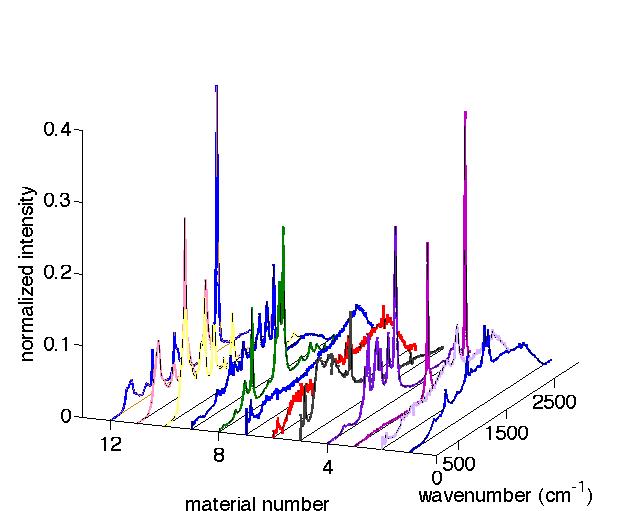Detection in Raman Spectroscopy Data
Raman spectroscopy has been shown to be a powerful technique for non-contact and non-destruction detections and identifications. It uses a laser to probe the vibrational energy levels of a molecule or crystal, and thus provides information on molecular structure and chemical composition of materials.
A Raman spectrum gives a set of peaks that correspond to the characteristic vibrational frequencies of the material, which can be used as a signature for identification of various materials. We develop algorithms for detection of surface-deposited chemical agents that provide robust performance to different operating and environmental conditions.
Active Project:
-
Algorithm Development for Standoff Raman Spectroscopy Data
Funded by the US Army Research, Development and Engineering Command (RDECOM)
Project team:
-
Dr. Wei Wang, Dr. Hualiang Li, Dr. Tülay Adali, Darren Emge
Recent publications:
- W. Wang, T. Adali, and D. Emge, "Subspace partitioning for target detection and identification," IEEE Trans. Signal Processing, vol. 57, no. 4, April 2009.
- W. Wang and T. Adali, "Detection using correlation bound in a linear mixture model," Signal Processing, vol. 87, pp. 1118-1127, 2007. An unsupervised detection method using canonical correlation analysis is introduced for Raman spectroscopy. Simulation and experimental results are presented to demonstrate the effectiveness of the proposed method.
- H. Li, T. Adali, W. Wang, D. Emge, and A. Cichocki, “Non-negative matrix factorization with orthogonality constraints and its application to Raman sctroscopy,” VLSI Signal Processing Systems for Signal, Image, and Video Technology, vol. 48, nos. 1-2, pp. 83-97, August 2007.
Resources:
- Joint surface contaminant detection: We provide the Matlab codes and sample data for joint surface contaminant detection.
